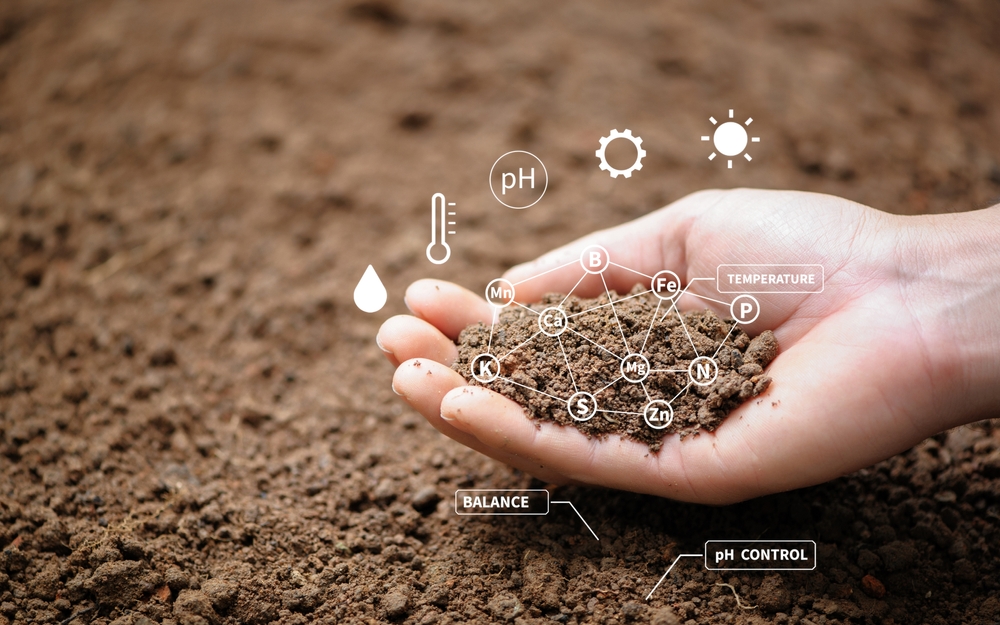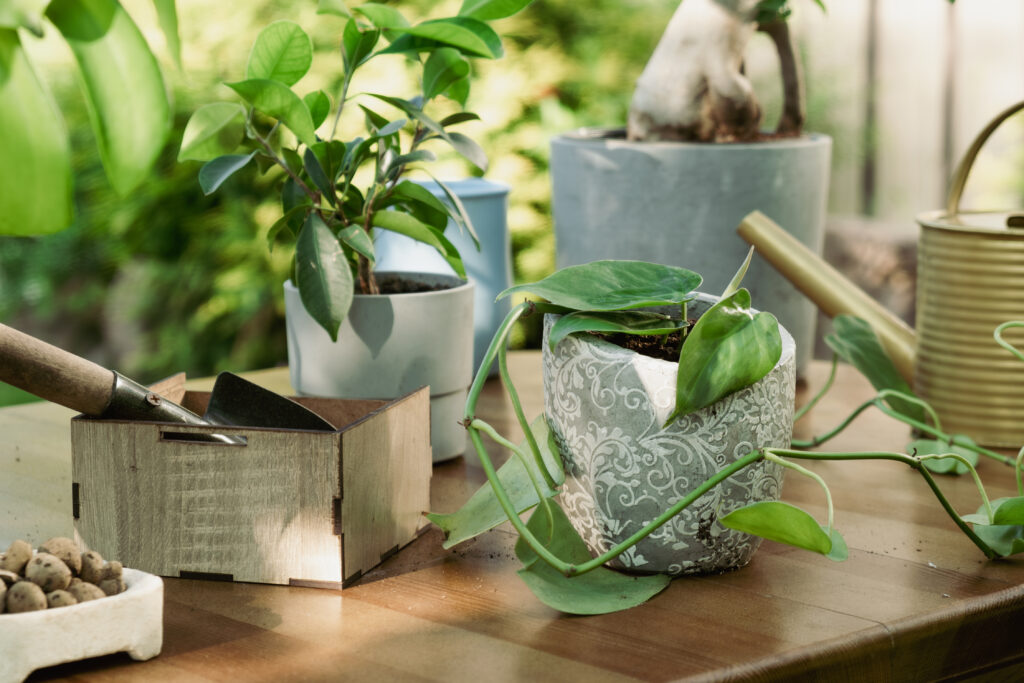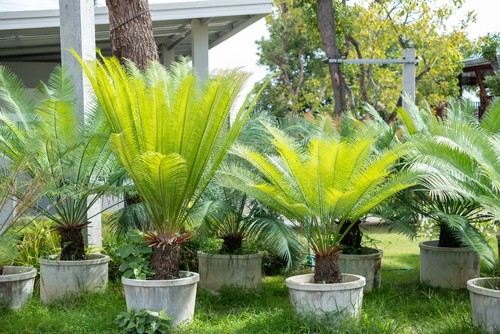Outdoor plants are a great way to add natural beauty to your garden or home. However, it can be frustrating when your plants start turning black and dying. This is a common problem that many gardeners face, and there are several reasons why it can happen.
Understanding the problem of outdoor plants turning black and dying is the first step in finding a solution. Environmental factors such as the amount of sunlight, water, and soil quality can all play a role in the health of your plants.
Overwatering or underwatering can also be a factor, as can pests and diseases. By identifying the cause of the problem, you can take steps to address it and prevent it from happening in the future.
Key Takeaways on Outdoor Plants Turning Black and Dying
- Environmental factors such as sunlight, water, and soil quality can impact the health of outdoor plants.
- Overwatering or underwatering can cause plants to turn black and die.
- Identifying the cause of the problem is the first step in finding a solution.
More similar posts:
Understanding the Problem

When outdoor plants start turning black and dying, it can be a frustrating experience for any gardener. Understanding the problem is the first step in preventing it from happening in the future. This section will cover the signs of dying plants and the common causes for blackening and death.
Signs of Dying Plants
Before a plant dies, it will often show signs that something is wrong. Here are some common signs of dying plants:
- Black leaves or stems
- Wilting or drooping leaves
- Yellowing leaves
- Brown spots on leaves
- Stunted growth
- Poor fruit or flower production
If you notice any of these signs, it is important to act quickly to save the plant.
Common Causes for Blackening and Death
There are several reasons why outdoor plants may turn black and die. Here are some of the most common causes:
| Cause | Description |
| Lack of water | Plants need water to survive, and if they don’t get enough, they can wilt and die. |
| Overwatering | Too much water can be just as harmful as too little. Overwatering can lead to root rot, which can cause blackening and death. |
| Lack of sunlight | Plants need sunlight to photosynthesize, and without it, they can’t produce the energy they need to survive. |
| Fungal diseases | Fungal diseases can infect plants and cause blackening and death. |
| Pests | Insects and other pests can damage plants and make them more susceptible to disease. |
| Nutrient deficiencies | Plants need certain nutrients to grow and thrive. If they don’t get enough of these nutrients, they can become weak and susceptible to disease. |
It is important to identify the cause of the problem before trying to fix it. Once you know what is causing the blackening and death, you can take steps to prevent it from happening again.
Role of Environmental Factors
Outdoor plants are susceptible to a range of environmental factors that can lead to blackening and death. Understanding the impact of these factors is crucial to maintaining healthy plants.
1. Impact of Temperature
Temperature is a critical factor in plant growth and development. Extreme temperatures can cause stress, leading to blackening and death. High temperatures can cause wilting, while low temperatures can cause frost damage.
It is important to select plants that are appropriate for the climate zone and to provide adequate protection during hot weather or cold snaps.
2. Importance of Sunlight

Sunlight is essential for photosynthesis, the process by which plants produce energy. Direct sunlight is necessary for many plants, while others prefer partial shade.
Full shade can lead to poor growth and susceptibility to disease. It is important to understand the light requirements of each plant and to provide the appropriate amount of sunlight.
3. Effects of Humidity
Humidity is another critical factor in plant growth. High humidity can lead to fungal diseases, while low humidity can cause wilting and stress. It is important to maintain appropriate levels of humidity for each plant and to provide adequate ventilation to prevent the buildup of moisture.
Watering Practices and Their Effects
Proper Watering Techniques
Watering is one of the most important factors in keeping outdoor plants healthy. Proper watering techniques can ensure that plants receive enough water without risking overwatering. The best way to water outdoor plants is to water deeply and infrequently. This means watering the soil until it is moist to a depth of at least 6 inches. It is important to water at the base of the plant rather than on the leaves to prevent fungal diseases.
Dangers of Overwatering
Overwatering is a common mistake many gardeners make. When plants receive too much water, the roots can become waterlogged and start to rot. This can cause the leaves to turn black and the plant to die.
Signs of overwatering include wilting, yellowing leaves, and a foul odor from the soil. To prevent overwatering, it is important to check the soil moisture before watering. If the soil is still moist, wait a few days before watering again.
Importance of Drainage
Proper drainage is crucial for outdoor plants to thrive. Without proper drainage, the soil can become waterlogged and cause the roots to rot. To ensure proper drainage, make sure there are drainage holes in the bottom of the pot or planter.
If planting directly in the ground, make sure the soil is well-draining. This can be achieved by adding sand or perlite to the soil. It is also important to avoid compacting the soil, as this can prevent water from draining properly.
Importance of Soil Quality

Outdoor plants require healthy soil to grow and thrive. The soil provides the necessary nutrients, water, and air for plants to absorb and use. Poor soil quality can lead to plants turning black and dying. This section will discuss the importance of soil quality for outdoor plants and how to maintain it.
Choosing the Right Soil
Choosing the right soil is crucial for outdoor plants. Different plants require different types of soil, so it is important to choose the right one for the plants you are growing. Soil can be classified into three main types: sandy, clay, and loam.
Sandy soil drains quickly and is low in nutrients, while clay soil retains water and can become compacted. Loam soil is a mixture of sand, silt, and clay and is the best option for most plants.
Adding organic matter to the soil can also improve its quality. Compost is a great source of organic matter and can help improve soil structure, water retention, and nutrient availability. It is important to choose high-quality compost that is free of weed seeds and pathogens.
Role of Nutrients
Soil nutrients are essential for plant growth and development. Nitrogen, phosphorus, and potassium are the three main nutrients required by plants. Nitrogen is important for leaf growth, phosphorus is important for root growth, and potassium is important for overall plant health.
Fertilizers can help provide plants with the necessary nutrients. However, it is important to use them correctly to avoid over-fertilization, which can lead to salt build-up in the soil.
Dangers of Salt Build-Up
Salt build-up can occur when fertilizers are overused or when irrigation water contains high levels of salts. This can lead to soil toxicity, which can cause plants to turn black and die. It is important to monitor salt levels in the soil and flush the soil with water if necessary to remove excess salts.
Diseases and Pests

Common Diseases
Outdoor plants can be susceptible to a variety of diseases that can cause them to turn black and die. One common disease is pith necrosis, which is a bacterial disease that causes black lesions to grow on the stem of the plant.
This disease is most active when the temperature drops and humid conditions are present. Excess levels of nitrogen can also cause pith necrosis to become active. Symptoms of pith necrosis include wilting of the stems.
Another common disease that can cause outdoor plants to turn black is powdery mildew. Powdery mildew is a fungal disease that appears as a whitish to grayish colored, powdery growth on the upper leaf surface.
This disease can occur in spots or patches and sometimes enlarge to cover the entire leaf or other plant structure. Powdery mildew is most active in warm, humid weather conditions.
Identifying Pests
Insects and pests can also cause outdoor plants to turn black and die. Common pests include aphids, whiteflies, spider mites, and leafhoppers.
These pests can cause damage to the leaves and stems of the plant, which can cause the plant to turn black. Identifying the pest is important so that the appropriate control method can be used.
Natural Pest Control Methods
Beneficial insects can be used as a natural pest control method for outdoor plants. Ladybugs, lacewings, and praying mantises are examples of beneficial insects that can help control pests.
These insects can be purchased at garden centers or online and released into the garden. Additionally, neem oil and insecticidal soap are natural pest control methods that can be used to control pests on outdoor plants.
Rot and root rot are also common diseases that can cause outdoor plants to turn black and die. Overwatering and poor drainage can contribute to the development of these diseases. To prevent rot and root rot, water the plant only when the top inch of soil is dry and ensure that the plant has good drainage.
Caring for Your Outdoor Plants

When it comes to caring for outdoor plants, there are a few things to keep in mind. From pruning and maintenance to transplanting tips, creating a healthy environment for your plants is key to keeping them alive and thriving.
1. Pruning and Maintenance
One of the most important aspects of caring for outdoor plants is pruning and maintenance. Regular pruning helps to promote new growth and blooms, as well as keep your plants looking their best. This involves removing dead or damaged branches, cutting back overgrown areas, and shaping your plants to your desired look.
In addition to pruning, maintenance is also important. This includes keeping your plants well-watered and fertilized, as well as checking for pests and diseases. Regularly inspecting your plants for any signs of trouble can help catch issues early on, before they become major problems.
2. Transplanting Tips
Transplanting can be a stressful experience for plants, but with a few tips, you can help minimize the shock and keep your plants healthy. When transplanting, be sure to choose a location that is suitable for your plant’s needs, such as the amount of sunlight and soil type.
Before transplanting, prepare the new location by digging a hole that is slightly larger than the root ball of your plant. Gently remove your plant from its current location, being careful not to damage the roots. Place the plant in the new hole, backfill with soil, and water thoroughly.
3. Creating a Healthy Environment
Creating a healthy environment for your plants is essential for their growth and survival. This involves ensuring that your plants have the proper amount of sunlight, water, and nutrients.
For potted plants, be sure to choose a container that is the appropriate size for your plant, with adequate drainage holes to prevent overwatering. Woody plants may require additional support, such as stakes or trellises, to help them grow upright.
Finally, having a green thumb doesn’t come naturally to everyone. If you’re struggling to keep your outdoor plants alive, don’t be afraid to seek advice from a gardener or nursery. They can provide valuable tips and advice on caring for your plants, as well as recommend suitable plants for your climate and skill level.
Frequently Asked Questions

How can I fix my outdoor plants with black and crispy leaves?
To fix outdoor plants with black and crispy leaves, you must first identify the cause of the problem. If the leaves are black and crispy due to overwatering, the plant may need to be repotted in fresh soil and watered less frequently.
If the leaves are black and crispy due to underwatering, the plant may need to be watered more often and placed in a location with more shade. In some cases, pruning the affected leaves can also help the plant recover.
What causes outdoor plants to turn black and die?
Outdoor plants can turn black and die due to a variety of reasons. Overwatering, underwatering, poor soil quality, pests, and diseases are some of the most common causes. Exposure to extreme temperatures, lack of sunlight, and improper fertilization can also cause plants to turn black and die.
What are some common reasons for plant leaves to turn black at the tips?
Plant leaves can turn black at the tips due to several reasons, including over-fertilization, underwatering, and exposure to extreme temperatures. Pests and diseases can also cause the tips of the leaves to turn black.
Why are the leaves on my indoor plants turning black?
Indoor plants can turn black due to overwatering, underwatering, poor soil quality, pests, and diseases. Exposure to extreme temperatures and lack of sunlight can also cause indoor plants to turn black.
What can I do to prevent my outdoor plants from turning black and dying?
To prevent outdoor plants from turning black and dying, ensure that they are planted in well-draining soil and receive the appropriate amount of water and sunlight.
Regularly fertilizing the plants and pruning them can also help prevent them from turning black and dying. Additionally, it is important to regularly inspect the plants for pests and diseases and take appropriate action if necessary.
Is there a way to revive outdoor plants with black leaves?
Reviving outdoor plants with black leaves depends on the cause of the problem. If the leaves are black due to overwatering or underwatering, adjusting the watering schedule can help the plant recover.
If the leaves are black due to pests or diseases, treating the plant with appropriate pesticides or fungicides can help. In some cases, pruning the affected leaves can also help the plant recover.

Hey, I’m Lisa and I’ve been an avid gardener for over 30 years. I love writing, talking and living in the garden! Feel free to connect with me on my socials below


